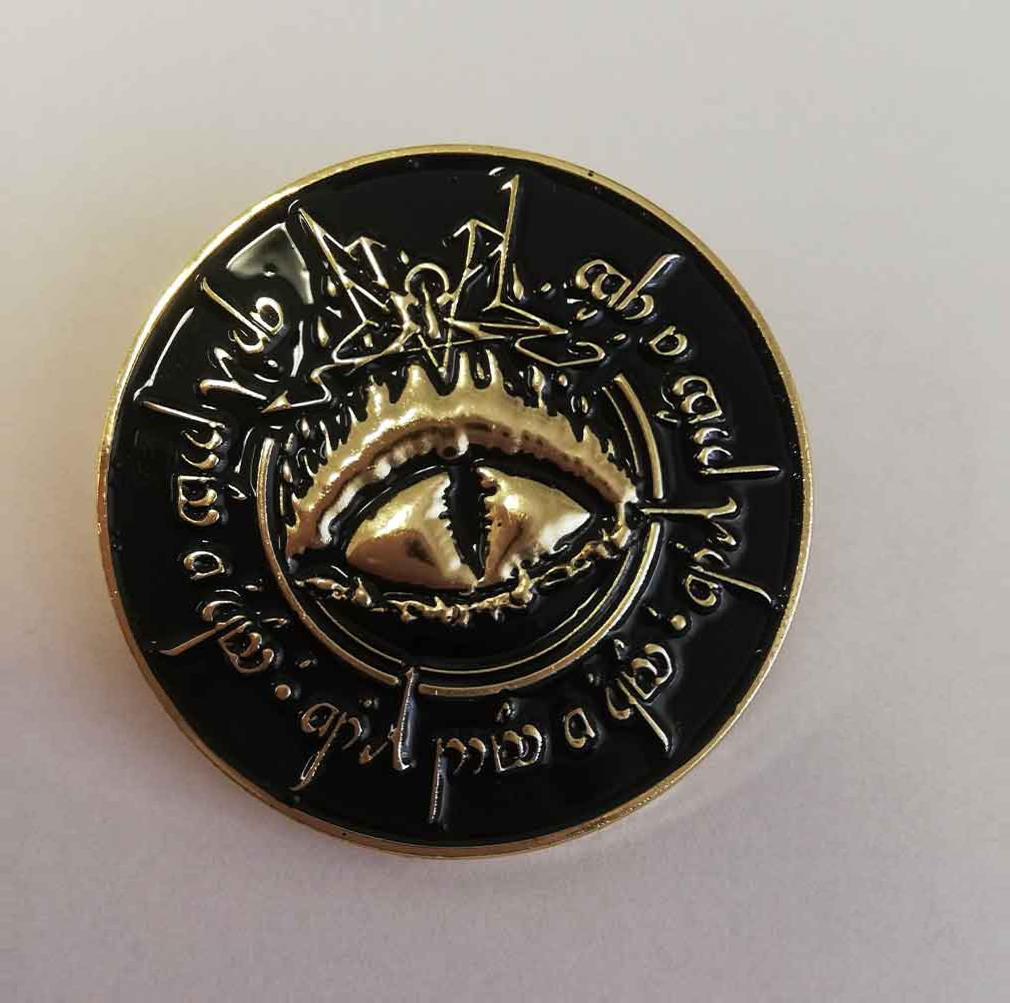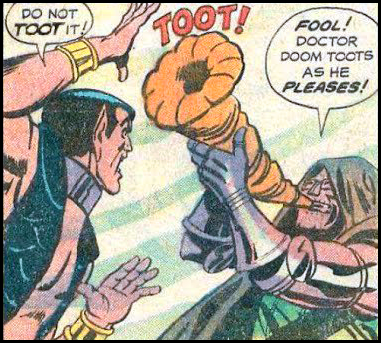Not long ago someone posted the following image (which I have shamelessly stolen) to one the Tengwar subreddits, asking for a translation.

(For those not in the know the Tengwar is the writing system devised by J.R.R.Tolkien for his Elvish languages. It’s very pretty but horribly impractical – the Elves were probably plagued with dyslexia.)
Two facts were quickly established. That the squiggly bits above the eye are the logo of the Tolkien themed, Austrian, atmospheric-black-metal band Summoning, and the writing is complete gibberish, a repetition of something like ait-h dom a chon. Case closed.
Except something about the whole thing nagged me. The photo is obviously of a manufactured item, probably a promotional item for the band, and likely made of metal. It seemed unlikely that the band – either as professional musicians or Tolkien fans – would go to all the trouble of making such a thing and then just stick a bunch of random letters on it. Surely it’s meant to mean something?

The first possibility was that it’s written in the Mode of Baloneyland. “Mode of Baloneyland” is a very funny pun, but you need to understand a few things about the Tengwar before you can understand it. Now, I could skip over this in the name of not boring the hell out of you, but this is my blog, and I write as I please!
Tolkien was a linguist (specifically a philologist), and he made his Elves linguists as well. As such the writing system he invented for them was not simply an alphabet, it was system that could be used to write any language. Each individual consonant (tengwa) is built out of components indicating the basic sound it represents, but it can be reassigned to another value depending on the needs of the language being written. The exact assignment of letters to sounds is called a mode, with examples in Tolkien’s works including the General Mode, the Classic or Quenya Mode, and the Mode of Beleriand.
This flexibility means that the Tengwar does not easily map to a computer keyboard. For a start you need to know what mode you’re writing in – the tengwa súle for instance represents “s” in Quenya Mode and “th” in General Mode. What key should that be mapped to? Also there’s two ways to represent vowels. In General and Quenya mode they’re indicated with marks (tehta) above the tengwa, but in the Mode of Beleriand they have their own dedicated tengwa – so should the ‘E’ key put a dot above a letter or print out the character yanta? It’s a nightmare!
As such, tengwar fonts don’t try to set up a correlation between the letters on the keys and the tengwar they print. They simply make all the tengwar available and rely on the person typing to know what they’re doing. Inevitably many people don’t know what they’re doing and try to write in “Elvish” by typing in a phrase in English and then switching it a tengwar font. Among tengwar enthusiasts the resulting gibberish is referred to as “The Mode of Baloneyland”. Get it? Like the Mode of Beleriand, but absolute baloney. See? I told you it was funny!
(Please laugh)
Now, if the text was written in the Mode of Baloneyland there would be no way to decipher it without knowing the mapping of the specific font it was written in. I decided to ignore this dead end and assume that whoever wrote it had some idea of what they were doing, but were just really bad at using the tengwar. So, I hopped over to Summoning’s Wikipedia page to look for any clues. I quickly discovered that in 2018 they released an album named “With Doom we Come”. Hmmm, not unsimilar to ait-h dom a chon…
A closer look at the image shows that the Redditor who translated the inscription as ait-h dom a chon missed a few things. Firstly the questionable quality of the metal casting makes it a bit tricky to tell for sure, but the final númen (‘n’) could actually be malta (‘m’), rendering it ait-h dom a chom. Secondly there are marks above the space before chom and the divider between repeated spaces – ait-h dom a’chom‘. These are clearly orphaned ‘e’s – when a tehta cannot be written above a letter it’s supposed to have a carrier (like a lowercase “i” without the dot) placed beneath it. This makes the phrase ait-h dom ae chome.
We’re making progress! The “t-h” on the end of the first word is clearly a result of the writer not realising that there’s a single tengwa for the “th” combination, but what’s with the ‘a’s? A consultation of a tengwar chart gives us the answer. While the character resembles osse – used to represent ‘a’ in the Mode of Beleriand – it’s actually not a valid tengwa at all! It’s the character vala (‘w’) printed backwards! So we’ve now decoded our way to with dom we chome.
Consulting a chart also solves the problem with “ch”. Whoever wrote out the phrase forgot to add a line to the tengwa calma (‘ch’), which would have transformed it to quesse (‘k’). Fix this and we have with dom we kome.
There’s still the issue that the first ‘o’ should have been doubled, but we’ve successfully demonstrated that the inscription is a really incompetent attempt at writing With Doom We Come.
For purposes of comparison here are the inscription as written, and how it would be written properly in both the orthographic (based on spelling) and phonetic (based on sounds) English Modes – all generated via Tecendil which is the only Tengwar transcriber you should use!



So in conclusion, perhaps get someone to check over your tengwar before sending merchandise for production, Summoning!

